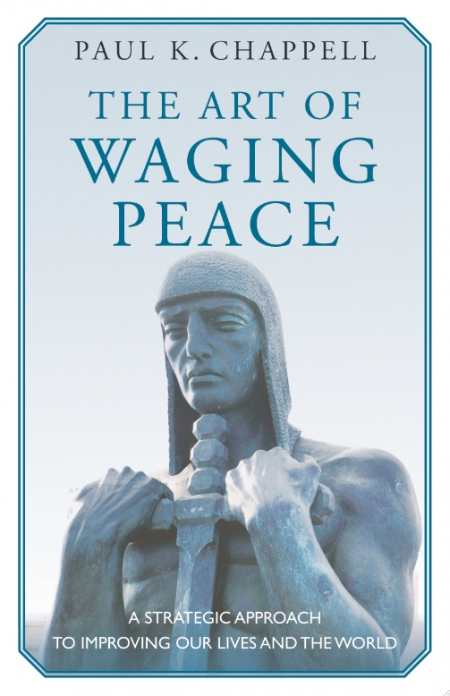The Art of Waging Peace
A Strategic Approach to Improving Our Lives and the World
This timely book presents a path to personal and global peace bolstered by the author’s experience and great thinkers of history.
As a West Point graduate who was deployed in Baghdad, Paul K. Chappell certainly knows war. As a multiracial child growing up in the South, he certainly knows conflict. He shares with readers a powerful journey toward peace. The tone of his childhood, set by his father’s haunting memories of the Korean and Vietnam wars, Chappell is open with readers about his struggle with rage and his difficult path to peace with himself and the world.
Chappell weaves his personal story throughout his research into the great peaceful thinkers of history, including Gandhi and Martin Luther King Jr. He draws examples from history and literature, like Hannibal and Captain Ahab.
The book shows readers the four lines of defense: the infinite shield, the sword that heals, deflection, and the perilous arrow. The first two are the elements of waging peace, and the book is divided into two parts accordingly. (Deflection and the perilous arrow are examined in the context of the infinite shield.) The infinite shield is the author’s ideological method to processing trauma, overcoming rage, and presenting a calm, nonviolent defense in the face of conflict. The sword that heals brings the benefits of the shield to the world by using strategic thinking to address deception and peacefully confront the issues of today’s world. Inherent in the book’s topic are deep themes like trust, truthfulness, calmness, and listening. Chappell ties these timeless ideas to timely issues like climate change, nuclear weapons, and political leaders bent on war.
The book contains some diagrams to augment the text, but in most cases the diagram itself is unneeded because the idea is already clear and simple enough in the text. The notes section equips readers to continue their own exploration.
For a person who has seen and been a part of much violence, and who is working to overcome an admitted problem with anger, Chappell’s voice in the book is utterly calm. He presents ideas in organized, well-reasoned ways but lets the ideas carry their own weight. He does not try to overpower readers with his thoughts or the force of his arguments. The hue and image of the cover also convey a feeling of peace.
This book will appeal most to philosophical thinkers who want to pursue the ideal of a nonviolent, nonmilitary path to world peace. The first part of the book especially is steeped in the idea that world change begins with personal and relationship change—and these ideas are powerful and transformative for all readers, regardless of military or political interest.
Reviewed by
Melissa Wuske
Disclosure: This article is not an endorsement, but a review. The publisher of this book provided free copies of the book to have their book reviewed by a professional reviewer. No fee was paid by the publisher for this review. Foreword Reviews only recommends books that we love. Foreword Magazine, Inc. is disclosing this in accordance with the Federal Trade Commission’s 16 CFR, Part 255.

